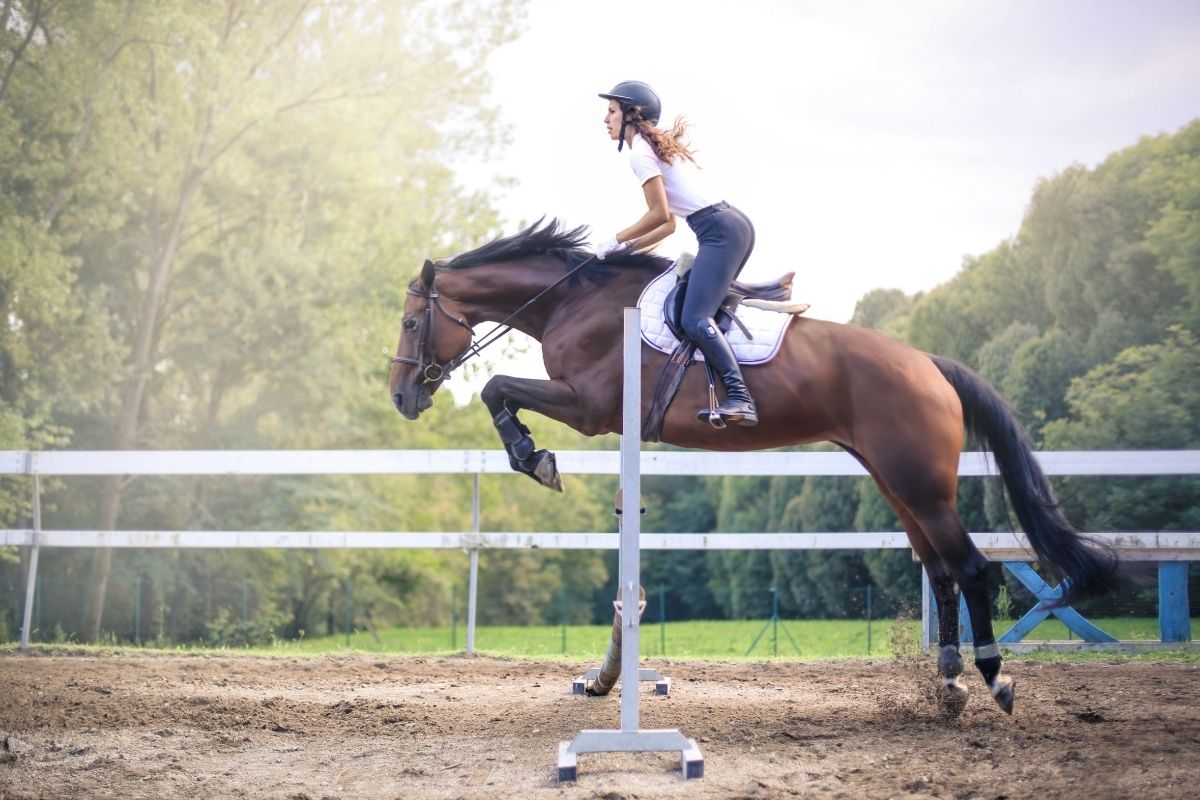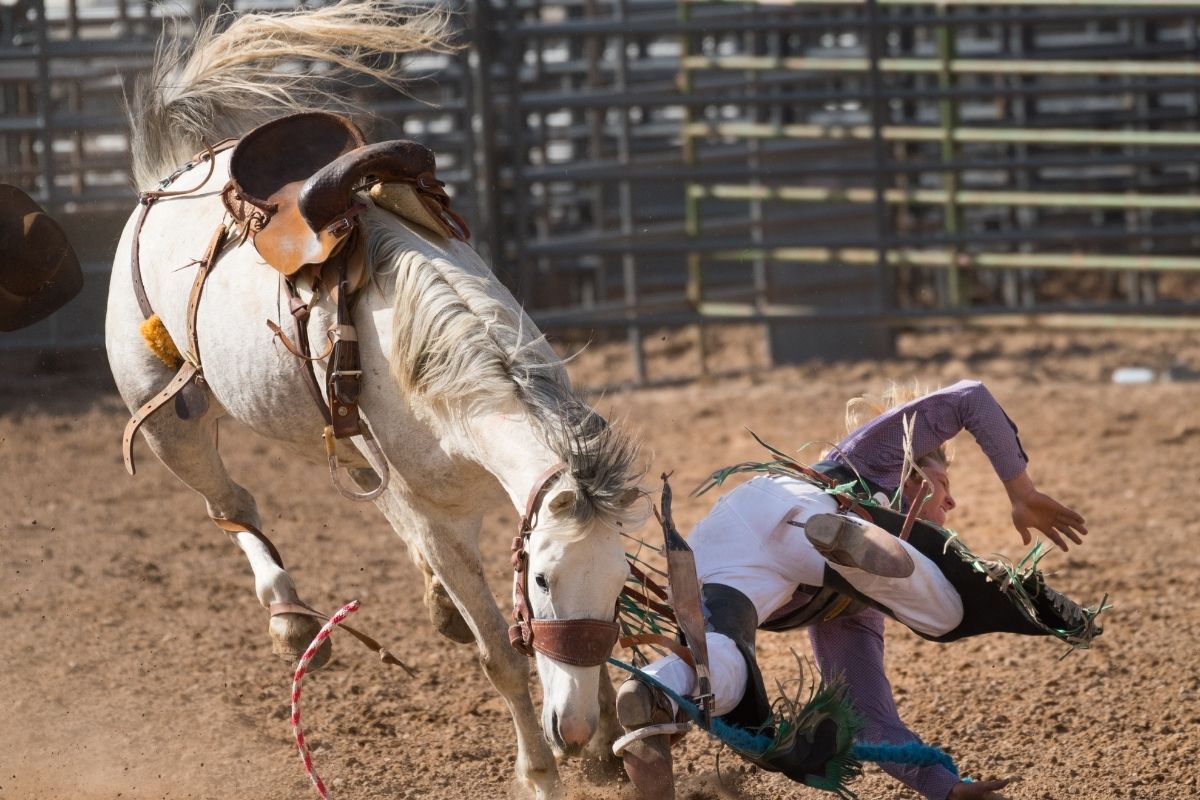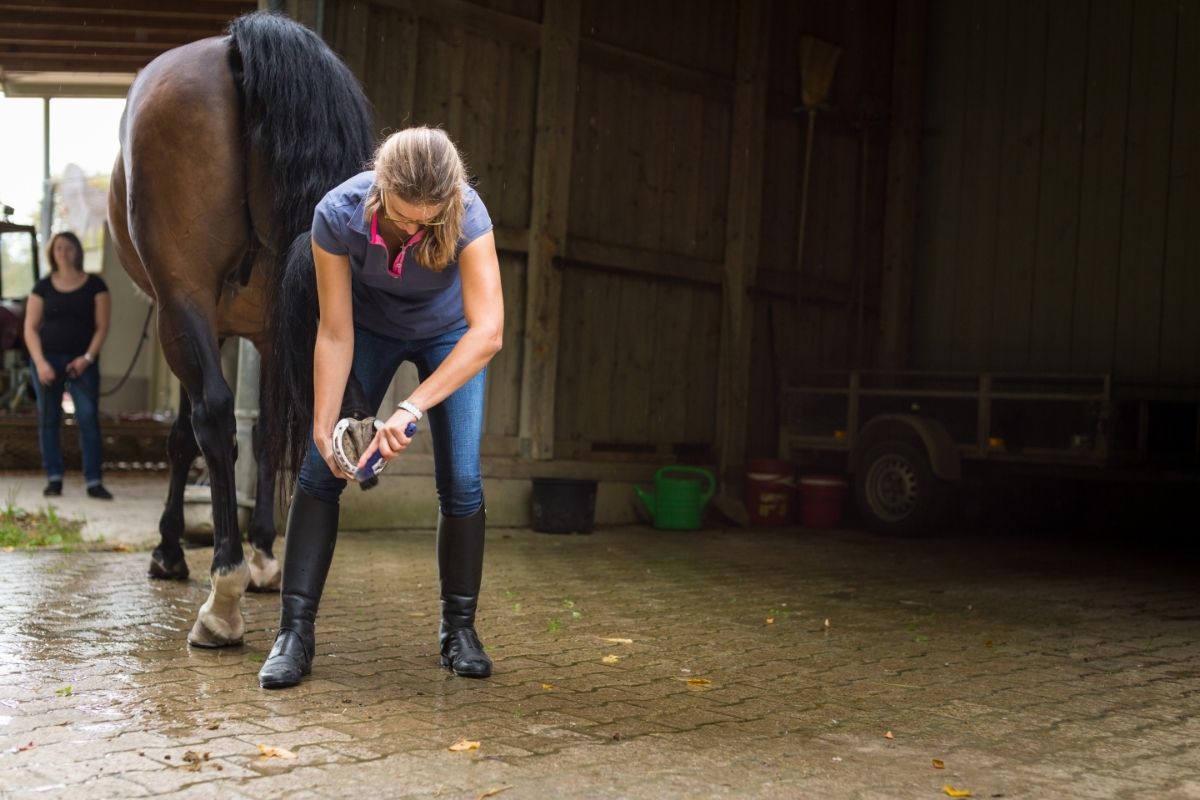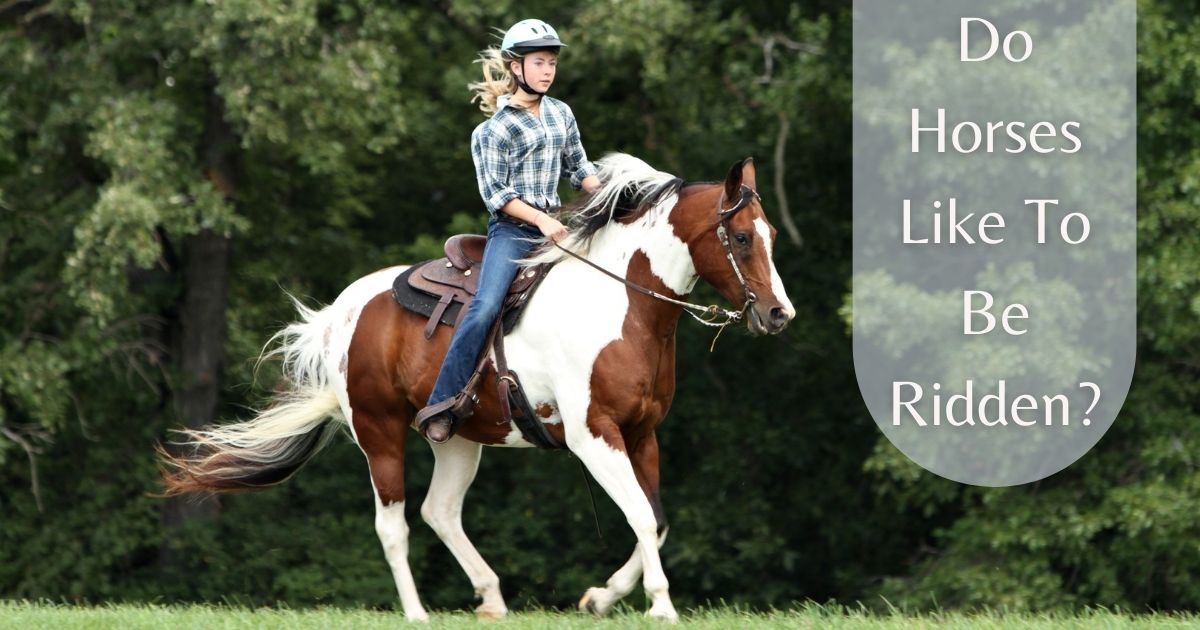Do horses like to be ridden? We see them race, trot, and gallop with awe. Their riders showcase their skills as they post the trots. However, a horse being ridden says little about its joy of the moment.
To answer the said question exhaustively, we also have to identify what horses like to do. That move will balance our equation. So, let us explore the two issues.

What Do Horses Like to Do?
If you want to spot things a horse likes to do, know when the horse’s signs of happiness. When doing the things it likes, it will exhibit symptoms of happiness. On the other hand, it will show dissatisfaction when forced to do what it does not like. What are these signs of a horse’s happiness and discontent?
Signs of a Happy Horse
- Floppy, relaxed, and sideway ears
- Low head
- A squarely-standing style
- Cocked back hip and foot
- Relaxed, drooping lips
- Slow, soft, and blinking gaze
- Rhythmically-swinging tail
Signs of an Unhappy Horse
- Fast swiveling or pinned-back ears
- Raised head
- Head and neck snaking behavior
- Legs spread apart
- showing a weighty rear
- Stomping, pawing feet
- Raised back-foot
- Quivering or flared nostrils when not working
- Pinched muzzle and lips
- Darting eyes with tight skin
- Wide-open eyes
- Tail swishing or relaxing
Do Horses Like to be Ridden?
Most horses being ridden tolerate the exercise rather than liking it. In other words, they feel okay to carry a rider and run around.
Sometimes, people think that the nature of a horse makes it adaptive to riding. However, they are wrong. Its long and straight back supports its heavy digestive system that hangs underneath. The back does not have those features to hold a riding saddle.
Some horses throw riders off their backs. It is a sign that riding makes some horses uncomfortable. So, even though we selectively breed horses for riding, sometimes their interests are the opposite of our interests. However, some horses are accommodative to their riders.
So, do horses enjoy being ridden? Unfortunately, it is hard to have a standard answer to this question. Some horses can ride for hours without showing any sign of discomfort. However, this behavior is subject to several factors. The factors include the rider’s skills and the horse’s health condition.
Different Horses React Differently to Riding
The opinion of a horse determines whether it will accommodate a rider or not. For example, some horses are curious to learn new things, like walking around. Also, they are more accommodative to riders than quiet and low-energy ones.
Giving horse freedom to choose between turnout and work is the only test you can give to a horse to identify whether it enjoys riding. Past studies revealed that some horses yearn to work with humans. Other horses scamper whenever they see a person approaching with a halter.
Naturally, horses have preferences and personalities. So, they can become selective on their riders. The horse and its rider have to share chemistry to collaborate during a riding session. This move results in an enjoyable riding experience for the horse and its rider. The failure to have personality intercourse will make the horse or its rider loathe riding.
You should provide an array of riding activities to your horse to identify the ones your horse likes. If you push it to do something it dislikes, it will hate riding. Its body language, energy level, and reaction will tell you whether it enjoys a riding exercise.
Signs That an Equine Likes to be Ridden
Horses that like riding activities exhibit several signs. If you are unsure whether your horse likes your riding moves, lookout for the following signs:
You Can Catch and Saddle It Easily
Riding a horse often makes him get used to the exercise. So, it knows what is coming in its way whenever you approach it. If you see it pricking its ears, whining, and coming towards you, it is looking forward to riding. A horse that follows you to the barn and keeps you still for grooming and saddling also likes riding.
It Stands Still for Mounting
If a horse stands still and waits for you to mount, it likes riding exercises. On the other hand, a horse that becomes fidgety and starts to move around does not like riding activities.
It is Attentive to You
After mounting a horse, watch its eyes and ears. A horse that turns its ears towards you whenever you speak is attentive and ready for a ride. Also, the eyes of a friendly horse should look where it is going. If things and people outside the arena distract a horse constantly, it does not like riding exercises.
It Does not Attempt to Eat on the Way
A horse that hates riding tries to have a bite of the vegetation growing on its way. If your horse focuses on moving rather than eating, the probability is that it likes riding exercises.
It Follows Orders
A horse that follows instructions without any resistance or deviation likes riding. Such a horse responds to your touch. It can also tell your next move. Those reactions denote that a horse focuses on you exclusively and is ready to obey you. On the other hand, a horse that works against you develops a tense neck when you give it a motion cue. Also, its body becomes rigid.
It is Often Relaxed
An agitated horse shows you that it dislikes riding exercises. On the other hand, if your horse flicks its ears back and forth, it is happy and relaxed. The horse will also have a quiet tail, a low head on long reins, and a loud breathing rhythm.
When you see your horse chewing and licking, it is a sign of relaxation after an intense event. However, those are not signs of submission. The horse is moving from an agitated state to a calm state.
Do you know the science behind the licking and chewing of a horse after a stressful event? First, horses develop a dry mouth after a disturbance. Then, after becoming calm, the horse starts to salivate and swallow the saliva.
Signs That a Horse Doesn’t Like to be Ridden
The signs that a horse shows when it dislikes riding are explicit. They are more visible than the signs it shows when it likes riding exercises. Watch out for the following signs because they depict that your horse is not ready for a ride:
Before a Ride
It is hard to catch and prepare a horse that dislikes riding exercises. Moreover, saddling such a horse is not possible because it keeps on running away or changing its standing points instead of standing still with ears back.
During a Ride
A horse that shakes its head, flares its nostrils and rolls its eyes does not like being under a saddle. Such a horse also pins its ears at your voice, and it can attempt to throw you off the saddle. Likewise, if you feel your horse bolting, spinning, rearing, or bucking, it wants to throw you off.
An uncomfortable horse during a ride swishes its tail. Sometimes, it can move its tail to get rid of a fly on its side. However, a horse that is not ready for a ride will swish its tail sideways and develop tensed muscles.
An uncooperative horse does not want you to ride it. Such a horse can resist your instruction to move, turn its head when you signal it using its reins, and keep on rattling the bit. Therefore, guiding a horse should be smooth and easy rather than daunting.

Why Would a Horse Not Like to be Ridden?
A horse can refuse your riding because of psychological and physical reasons. So, contact your vet, psychotherapist, or farrier to identify whether your horse has a health condition that makes it refuse to ride. Otherwise, the following are some of the reasons that make your horse dislike riding exercises:
Unfitting Tack
If the bridles and bits of your horse are not fitting, your horse can keep on shaking its head during a riding exercise.
Also, unfitting saddles create pressure points and pain on the backs of ridden horses. If you spot fur hairs under the saddle, it is an indication that the tack is unfitting.
Tack rules assert that your saddle fitter should evaluate your horse’s tack every six months. This is because horses undergo musculature changes that require changing the settings of their tack periodically.
Excess Training Aids
Do you know that you can avoid all training aids after thorough training and riding your horse skillfully? If you must use the aids, use side reins, whips, tie-downs, spurs, and martingales only. Otherwise, keep the number of training aids as low as possible.
If you use a specific aid because your horse has a training problem, use it until the horse overcomes the challenge. Then, after it masters the drift, stop using the aiding item. Remember, long-term use of training aids makes the horse rebel against them.
Health Issues
As a rule of thumb, always diagnose health problems on your horse as early as possible. The move makes riding enjoyable again without taking so long time. You should be on the lookout for the following common health issues:
- Leg and back problems
- Musculoskeletal pain
- Arthritis
- Hoof conditions
Sometimes, diagnosing horses’ health conditions requires professional expertise. The process calls for the application of several tests to identify the specific health issue.
Remember, horses can hide their problems instinctively. It is an adaptation that enabled horses to survive in the wilderness for eons. So, be carrying yearly health tests on your horse. Also, use the Equine Grimace Scale and Ridden Horse Ethogram to determine whether your horse is experiencing any pain.
Temperament
Some horses have a temperament that dislikes riding exercises. Sometimes, this temperament overrides training that such horses get on accommodating a rider. If you find such a horse, it is not for riding.
Sometimes, a horse can have a temporary mood that dislikes riding exercises. What do you do in such an instance? First, go easy on your horse during that period. Doing so helps it rejuvenate its riding energy and bounce back to life.
Experiences
Horses that experience abuse from their past riders develop a dislike for riding exercises. Such a horse does not have the confidence to ride again. It can take a while before the horse gives in to riding again. So, you have to practice patience, dedication, and love towards such a horse until it feels like riding again.
If your horse is inexperienced in riding, it can find the exercise quite hard. So, it can refuse to ride. Such a horse requires consistent tiding sessions to get used to riding. Over time, the horse will get used to and start enjoying riding exercises.
Rider Problem
Riders contribute significantly towards the refusal of a horse to ride. If you do not improve your riding skills and fitness constantly, your horse will dislike riding with you in the future. Also, it will refuse your future riding advances.
Did you know a horse can only carry up to 20% of its body weight safely? If you get too heavy for the horse, it can develop musculoskeletal problems and back pains. So, always compare your weight and the weight of a horse before mounting it.
Your imbalanced sitting position on your horse can also make your horse disobey your riding instructions. For example, a prolonged imbalanced sitting position on horseback makes a horse develop uneven muscles. So, always ask a professional rider or instructor to assess your riding positions regularly.
If you are an overly harsh, nervous, or ignorant rider, your horse can rebel against you. It can even refuse to carry you. Naturally, a horse can get fearful or anxious because of a nervous rider. Rider’s stress has a ripple effect on the confidence of a horse.
How You Can Make Riding More Enjoyable for Your Horse
Before taking any action after experiencing rebellion from your horse, you have to ask yourself a series of questions as follows:
- What is the cause of discomfort?
- When did I notice the strange behavior?
- What happened to the horse right before the new behavior?
- What happened to the horse right after the new behavior?
- How often does the horse act this way?
These questions will help your investigative process to ascertain the problem, identify its cause, and develop its remedy.
Now that you know horses can naturally or subjectively refuse to ride, it is not over yet. You can improve the situation using several strategies. The following are some of the measures you can take to make your horse enjoy riding:
Identify the Preferences of Your Horse
Horses look up to you to understand their feelings. So, they seek your attention at all times. Drop the practice from its training program; drop it if you notice that your horse does not like a specific training routine. The move does not translate to allowing your horse to rule the game. It means going with the choice of your horse.
If you identify what your horse likes to do, take it up and do it with your horse often. If it is a group horse, allow it to train or ride in a group of other horses. For example, a food-oriented horse requires grazing breaks during a ride.
Be Diverse
Horses do not like routine training exercises. Mixing up the activities makes your horse attentive and engaged during the training sessions. In return, your horse will be looking forward to riding times always.
Alternating between trail rides and arena work is also an ideal option that can make your horse like riding. You can also interchange the arena exercises to follow a new sequence. Lastly, you can vary individual working time with group sessions.
Relate Well With Your Horse
Always spend quality time among your horses. The move strengthens the bond you have with your horses. Spending time with your horses makes them yearn to have you close and to ride with you.
Improve the Horse’s Comfort
Seek to reduce training aids and use a gentle tack on your horse. You and your horse will start enjoying riding because you will become skillful, and the horse will feel no pain.
Be Patient and Relaxed
Sometimes, things can go the unexpected way when dealing with your horse. If such a situation occurs, remain calm and understand your horse’s behavior. Also, wait for your horse to resume back to its riding composure.
Work-out Your Horse
Your horse needs to be in good physical condition to carry you. It also requires sufficient stamina and muscle energy that matches the level of activity it faces. So, feed it well, attend to its health needs, and train it adequately.
Provide Friends, Freedom, and Forage to Your Horse
Your horse requires friends, freedom, and forage for its overall wellbeing. So during its free time, let your horse mingle with other horses while taking a forage-based diet. Doing so gives it a high-quality life that improves mental and physical conditions.
Know Things to do Before a Horse Ride
A comfortable saddle is not all you need to hoist on your horse for a good ride. You need to groom your horse first. The move will give you a chance to check for twisted hair spots that can develop into painful knots as you ride.
Grooming also helps you check whether your horse has injuries on its skin, especially on its back. For example, if the horse twitches when you brush its back, it is a sign of pain that requires investigation.
You also need to rub your hand on the horse’s back to identify any sores, bumps, and heat spots that can make riding painful to your horse.
Before mounting the saddle blanket, check whether it is free of debris. Also, ensure it lays evenly and smoothly after placing it on the horse.
The next step is to check whether the saddle has pieces of hay attached to its backside. Also, check whether the saddle pads are in perfect condition.
Finally, check the girth before fastening it on the saddle. It should be clear. Also, it should rest evenly on the horse without pinching it.
Know Things to do After a Horse Ride
Do not just remove the tack and pat your horse after a ride. Instead, walk it for a few minutes, and then hydrate it. Afterward, walk it again and give it more water. Repeat the process until the horse cools down completely.
After cooling your horse, repeat the grooming process you had carried out before the ride. Brushing also removes dried sweat that can make the horse’s skin itchy.
Remember to check the hooves of your horse after a ride. Stones and dirt can stick on the frog of the hooves and cause pain. Also, check for any injuries to the frog.
Finally, separate the horses and feed them with treats, such as Alfalfa flakes. It is a way of rewarding the horse for its obedience during a hard ride.

Final Thoughts
It is hard to say whether a horse likes to be ridden or not. However, you can determine the outcome. If you treat your horse kind and understand its feelings, you are on your way to making it to enjoy riding with you. So, it is up to you to improve the riding conditions of your horse. Let your horse know that riding is not all that bad.
